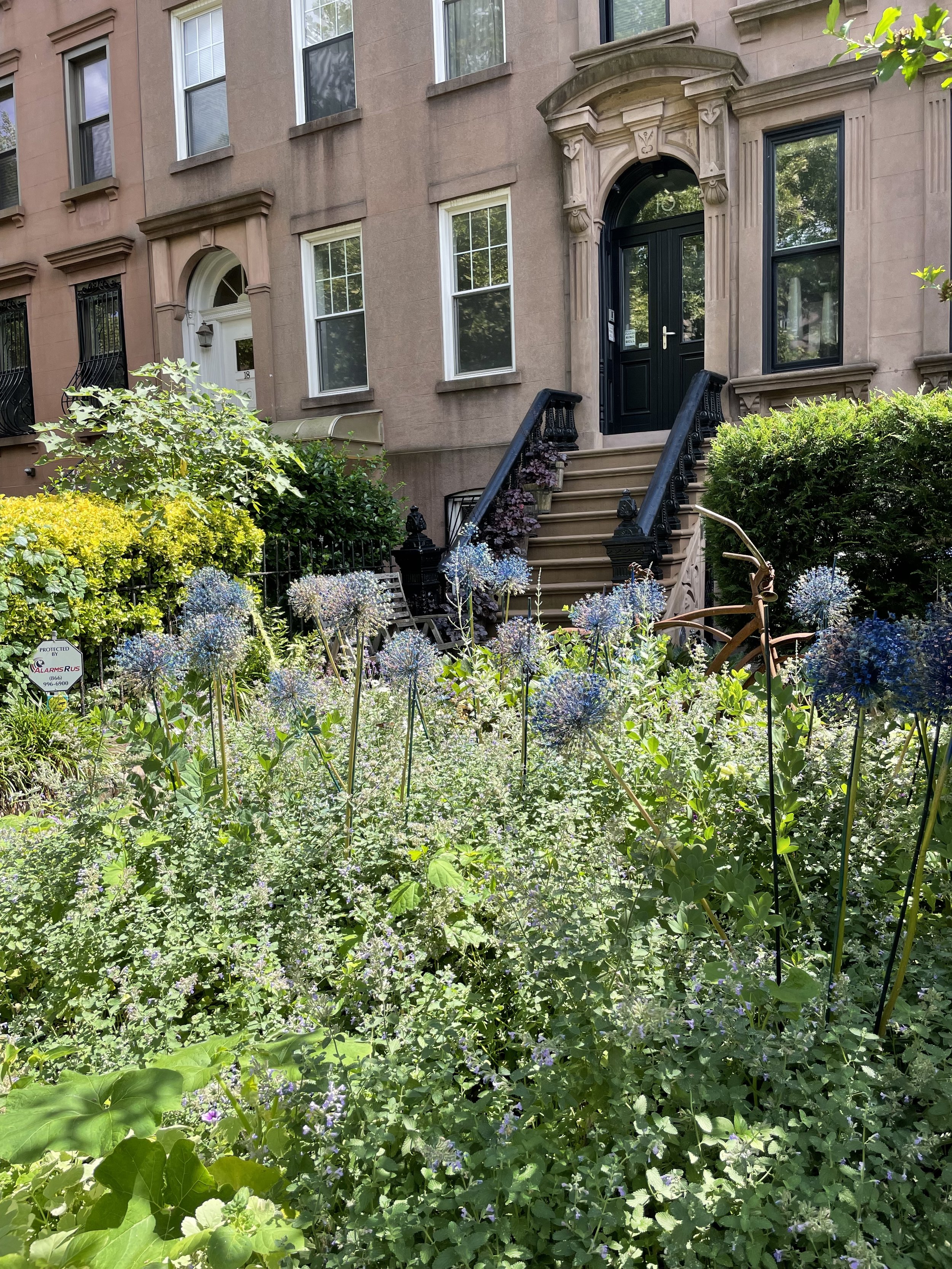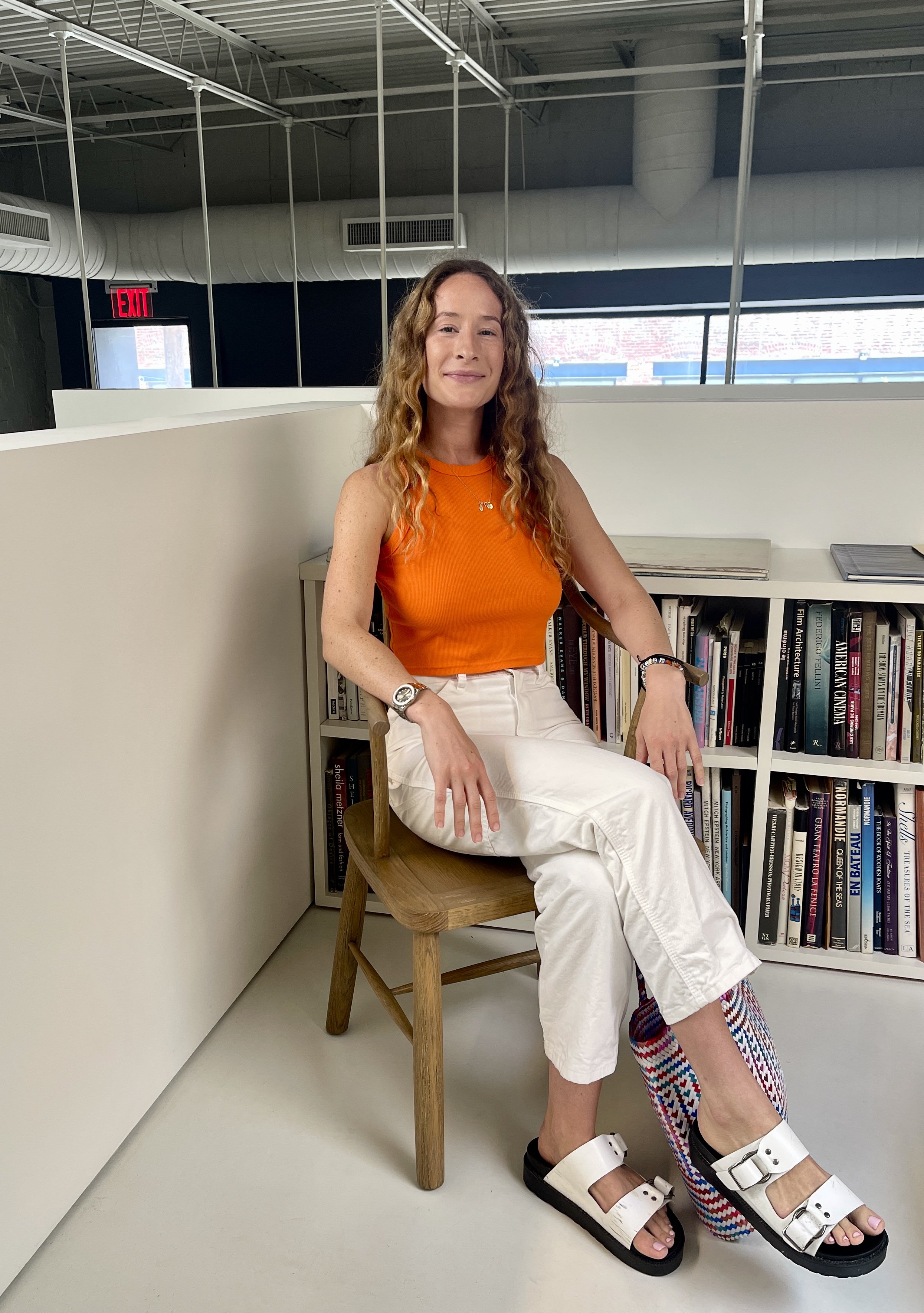On a sunny afternoon last summer in Brooklyn, Jody and I sat down to catch up with our friend and colleague, Calvin Tsao. Seated in his lofted office oasis and later over lunch in Gowanus, we reflected on art, history and culture. He had just been awarded the AIA medal of honor for his firm with partner Zack McKown - a much-deserved recognition of their talents.
Calvin’s brilliance is in his thoughtfulness and depth of both knowledge and feeling. His ideas are rooted in history and yet untied to tradition, armed with the knowledge of the choices and patterns that led to the present along with the skills and openness to reimagine it.
When designing his sister’s bathroom, Calvin encountered the paradox of needing a a counter low enough for a seated vanity and a high enough to wash hands standing at the sink. Realizing he needed a raised sink, he noticed the wok in her kitchen and placed it on top of the counter. So began the development of the first ever over-counter sink that we now see in magazines and hotels across the world. Calvin worked with a fabricator to customize the perfect basin shape that would be comfortable to use and wouldn’t splash water.
As a child growing up, Calvin would take obscure French plays and turn them into scrips and plays with his friends, creating a whole theater production. Following this love of theater to school, he was discouraged from the main stage as a result of the racism of his superiors. Put behind the scenes, he found himself wanting to take charge of the entire vision of the production. By a twist of fate and inspired by his sister’s boyfriend, he transferred to the Harvard School of Architecture where he would soon be empowered to create entire worlds for people from scratch.
The role of the designer, we agree with Calvin, is to engage their client and help define their visual identity. As he aptly explained, the perfect client has a foundation in history and art as it is essential for opening the mind to other ways of exploring design. Design is a language for communication, and its foundation must exist between designer and client in order to spur engagement. Calvin explained that design is not only about style, but combining specific references and understanding how and why they originated. With the advent of social media, many clients now come with a collection of images that they want to recreate exactly, thus leaving little room for a professional beyond a consultant and sourcing agent. The perfect client has enough confidence to trust in another person to offer them something new and help them to discover their authentic image.
As a communication tool, design reflects political and religious states of affairs through trends and eras. Calvin described the example of a time when black was the hardest color to create and required toxic materials, therefore becoming synonymous with wealth. Calvin recounted stories of a shop in Rome where the Pope has his garments made and where they sell socks in only two colors. Six generations ago it was closed to the public, but the strict limitation of their offerings has attracted the attention of shoppers around the globe.
Connecting through our common languages - art, history, culture - even just for an afternoon, can feel like a trip to the wellspring. As designers and collaborators we are joined by insatiable curiosity. Uniting our unique backgrounds that weave through shared passions and motivations fuels our knowledge and sparks the seeds of collaboration. We are reminded ever more of our interdependence, deepened and colored by language, creation, and expression.







